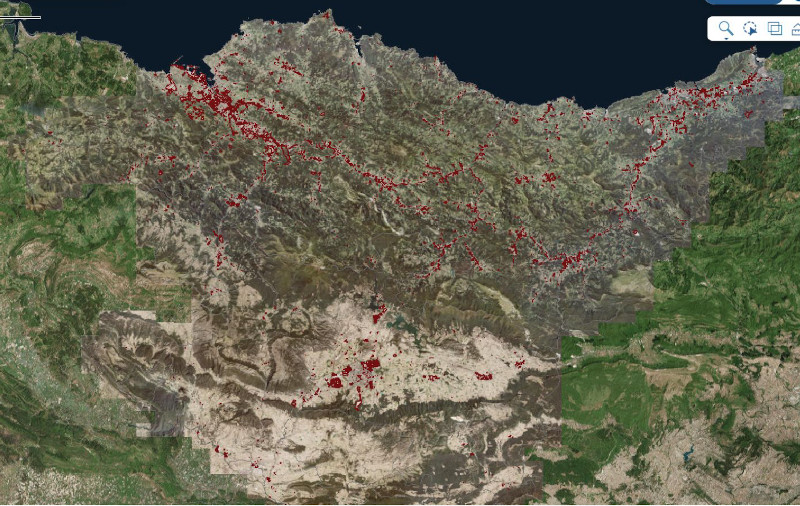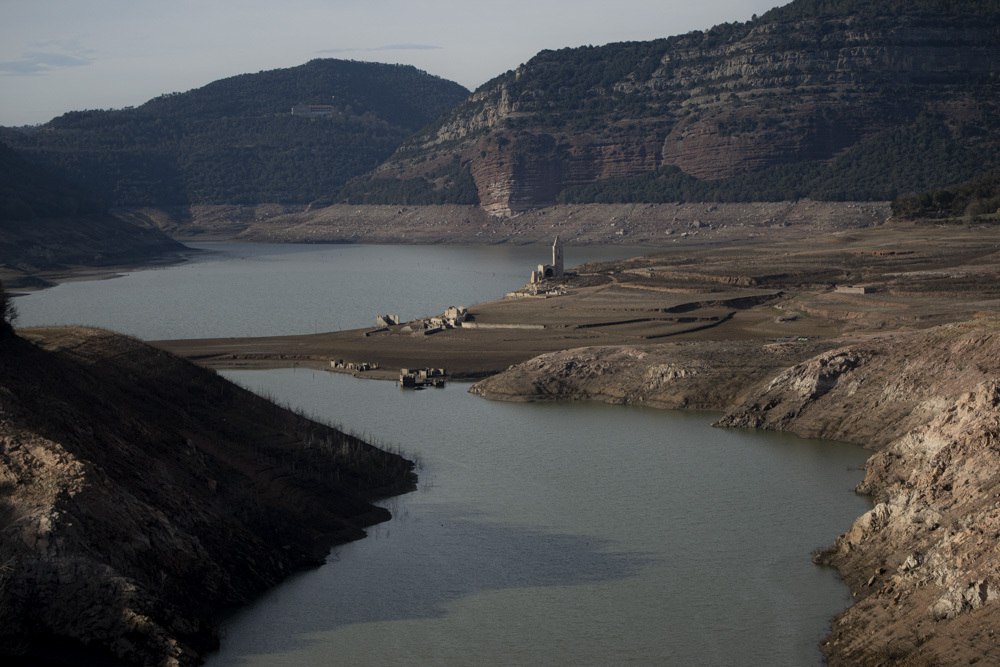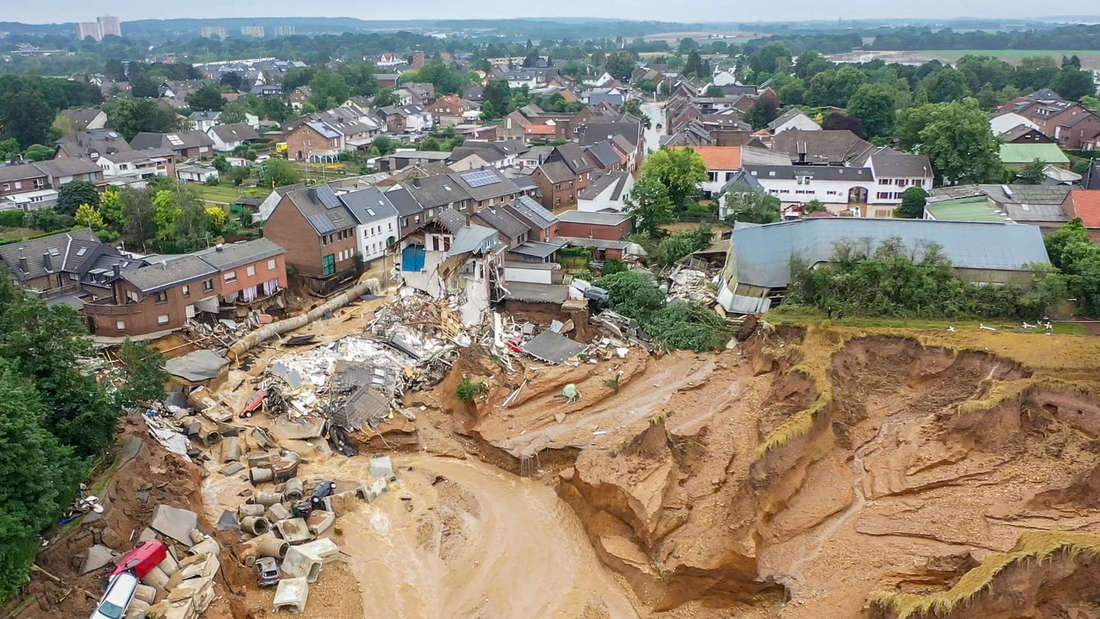Beyond climate warming: How water and carbon cycles are formed
- The climate problem is becoming increasingly worrying: warmer summers, droughts in many regions, violent weather phenomena that cause material damage and human loss… The only explanation given about the problem is "climate warming".
Several international congresses and agreements have been held in this area over the past 30 years. The United Nations Framework Agreement on Climate Change, adopted in New York on 9 May 1992, states that "human activity has significantly increased greenhouse gas concentrations in the atmosphere", which "strengthens the greenhouse effect of the [planet]", leading to "even greater warming" of the earth's surface and of the atmosphere, which "may harm humanity as natural ecosystems". The agreement aims to “stabilise greenhouse gas concentrations in the atmosphere at a level that prevents potentially climate-dangerous anthropogenic interference”.
Thus, since the first conference, it has been established that climate change is a consequence of increased greenhouse gases in the atmosphere and equates human climate disruption to global warming.
The results were the Kyoto Protocol (11 December 1997) and the Conference of the Parties (COP). The last conference, COP 28, was held in Dubai in December 2023. The objective of all POPs has been to stabilise and subsequently reduce greenhouse gas emissions to avoid "anthropogenic climatic changes". The Paris Conference (COP 21 held in 2015) acknowledged that, despite efforts to mitigate greenhouse gas emissions, part of climate change can no longer be avoided, and efforts to stabilise and mitigate temperature increases should therefore be complemented by measures to adapt to the effects of climate change.
On the eve of COP 27, many authorities accepted that the target of limiting warming to 1.5 degrees could not be achieved and, at the same time, refused more targets they had decided until then.
Conference by COP, non-compliance with global emission reduction targets. Is our climate doomed to uncontrollable warming?
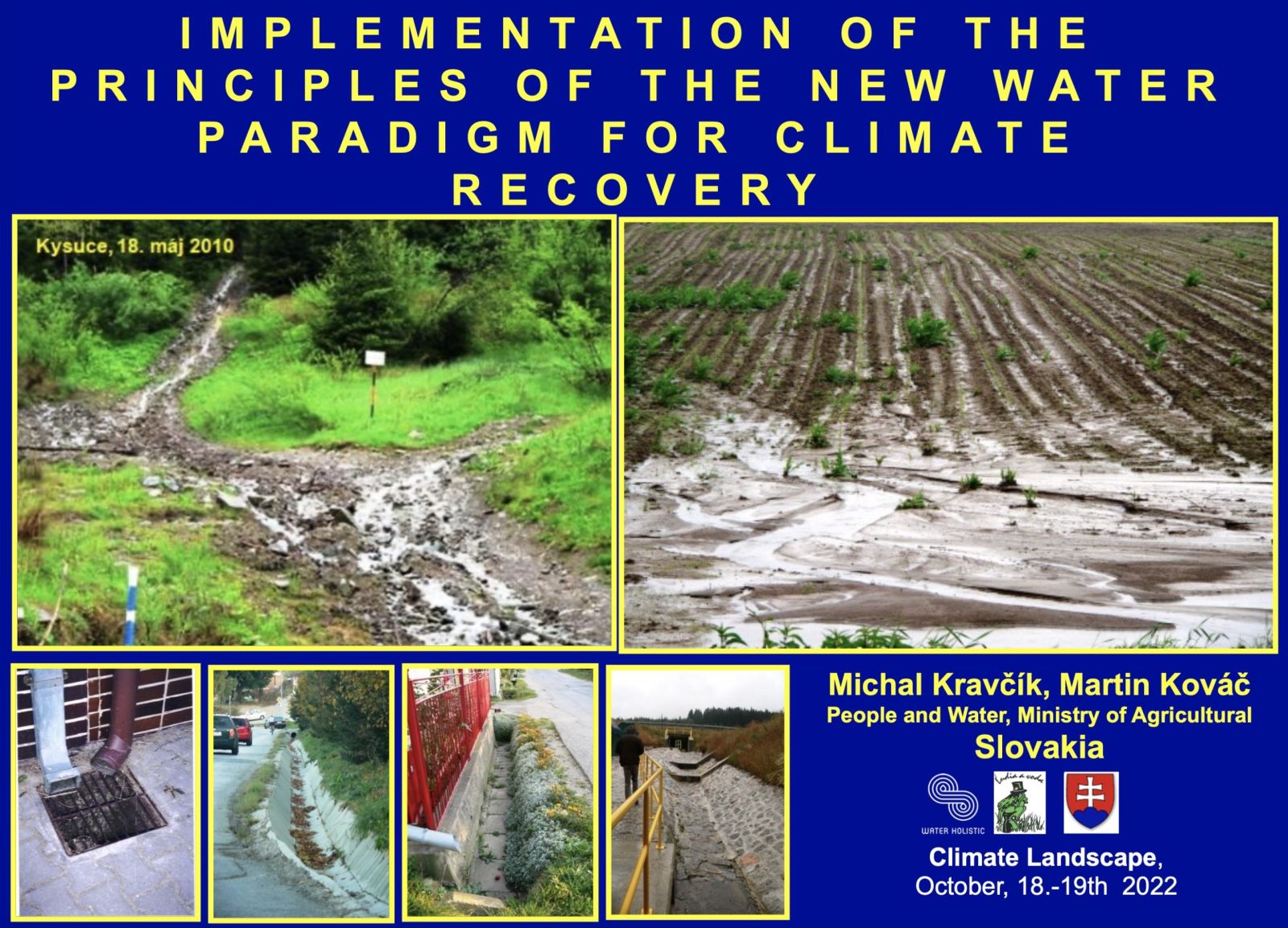
Previously, the following question should be raised: when talking about "anthropogenic climate disturbance", is this only related to global warming or are there other causes? This brings us to a second question: The only explanation of climate change that we're living today is the carbon cycle, has nothing to do with the water cycle?
The importance of the climate water cycle was raised in 2008 by a group of hydrologists from Slovakia and the Czech Republic, including Michal Kravčí and Jan Pokorniz. This group published Water for the Recovery of the Climate, A New Water Paradigm. The study highlighted, on the one hand, the role of plants to cool the atmosphere by evapotranspiration, and on the other, the need to cope with the surface runoff of rainwater [to avoid rain invasion by the earth’s surface too quickly, in Spanish “runoff” and in French “ruissellement”], which should penetrate the soil in the same place where the rain fell.
In order to respond to the catastrophic floods in the Danube basin in 2010, the Slovak Republic successfully implemented this concept by establishing in 2010-2011 the Programme for the Revitalization of Landscapes and Integrated River Basin Management. Thanks to this programme, 7,700 jobs were created (most of them 6 months) and tens of thousands of small structures were built in the valleys that withstand the highest runoff, in order to reduce the discharge of rainwater and infiltrate the soil. In the regatta, small dams were built with logs and tree branches, non-watertight, small reservoirs accumulating land, water logs... The result was observed in the heavy rains of 2011, since no flooding was observed in the places where these structures were built and vegetation was promoted.
Long before 1992, Reginald and Nicholas Newell spoke for the first time of the "air vapor rivers": In the Amazon, almost as many steam water as the Amazon River carries 165 million liters per second. In 1994, Yong Zhu and Reginald E of the Massachusetts Institute of Technology. Newell published Atmospheric rivers and bombs, where they explained the role of very dense atmospheric water vapor flows in violent climatic phenomena. These flows originate in wet air from the sea. The Boulder Laboratory of the National Ocean and Atmospheric Administration EE.UU. (NOA) carried out measurements one kilometer from Colorado's land surface, where it was observed that the wet steam river transported 50 million liters of water per second by air, equivalent to a 100-meter diameter pipe carrying water at 50 km/h.
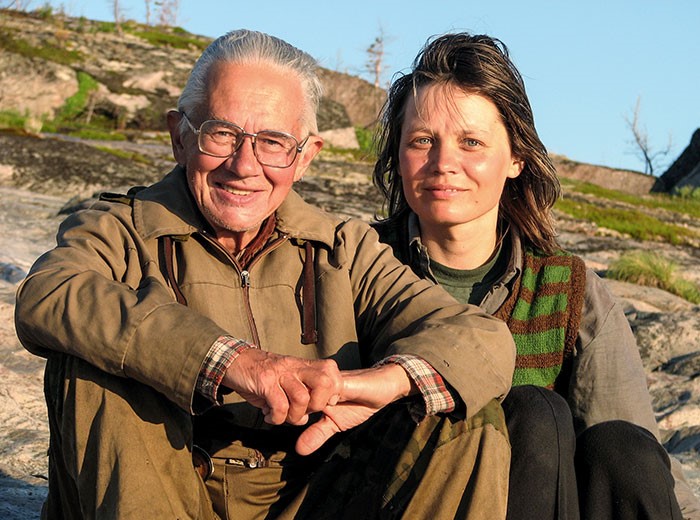
In 2007, Anastassia Makarieva and Viktor Gorxkov of the University of St. Petersburg formulated a new concept: the biotic bomb. This explains why at the top of the water vapour columns formed over large forests there is condensation that attracts wet marine air into the continent, thus increasing the humidity of the air vapour rivers. [Some air vapor rivers also call them “flying river”].
Later, Antonio Donato Nobre applied this theory to the Amazon and explained how nowadays deforestation is being depleted by the action of air vapour vados in South America, causing damage to the entire climate of the Atlantic slope.
The literature on the subject has multiplied over these years and in 2012 a new study was published by more than two dozen researchers from the five continents that showed that the evapotranspiration of forests helps to cool the climate.
And in the end, in July 2021, the United Nations Environment Programme (UNEP) has published Work with plants, soils and water to cool the climate and rehydrate the terrestrial landscapes. It is said that "between 40% and 60% of the rain falling on the earth comes from the moisture produced by terrestrial evapotranspiration", that "the conversion of forests or grasslands into farmland reduces the evapotranspiration of the earth" and that "the destruction of forests can reduce the rains in some places and lengthen the dry seasons".

UNEP conclusions based primarily on the water cycle offer a new vision of climate change: "The continued destruction of forests, the deterioration of soils and, consequently, the loss of water accumulation capacity by soils and the retention of water by natural spaces, cause confusion in water flows, both from the soil and from the atmosphere. The change in rainfall caused by this disorder can lead in many parts of the world to reduced rainfall, increased droughts and temperature warming, as well as to worsening climate change.”
So plants, and especially trees, play a fundamental role, not just in carbon storage. It is essential to restore the humidity cycles of the atmosphere and this is related to the presence of vegetation. We need to stop deforestation, increase reforestation and change our agricultural practices by developing agroforestry.
In view of the causes of climate change in one way or another, the consequences are also seen differently. Here we summarize both approaches.
Climate change based exclusively on the carbon cycle
From this point of view, reducing greenhouse gas emissions is the solution to climate warming.
In line with the approach set out in the Kyoto Treaty, the impact of forests on climate warming is only analysed on the role they play in the carbon cycle: the carbon content accumulated in trees and soils as a result of photosynthesis. Climate warming would increase evaporation on the oceans and thus increase the average humidity of the planet, although it would vary greatly from region to region: precipitation in subtropical and Mediterranean regions would decrease and precipitation in middle and high latitudes would increase.
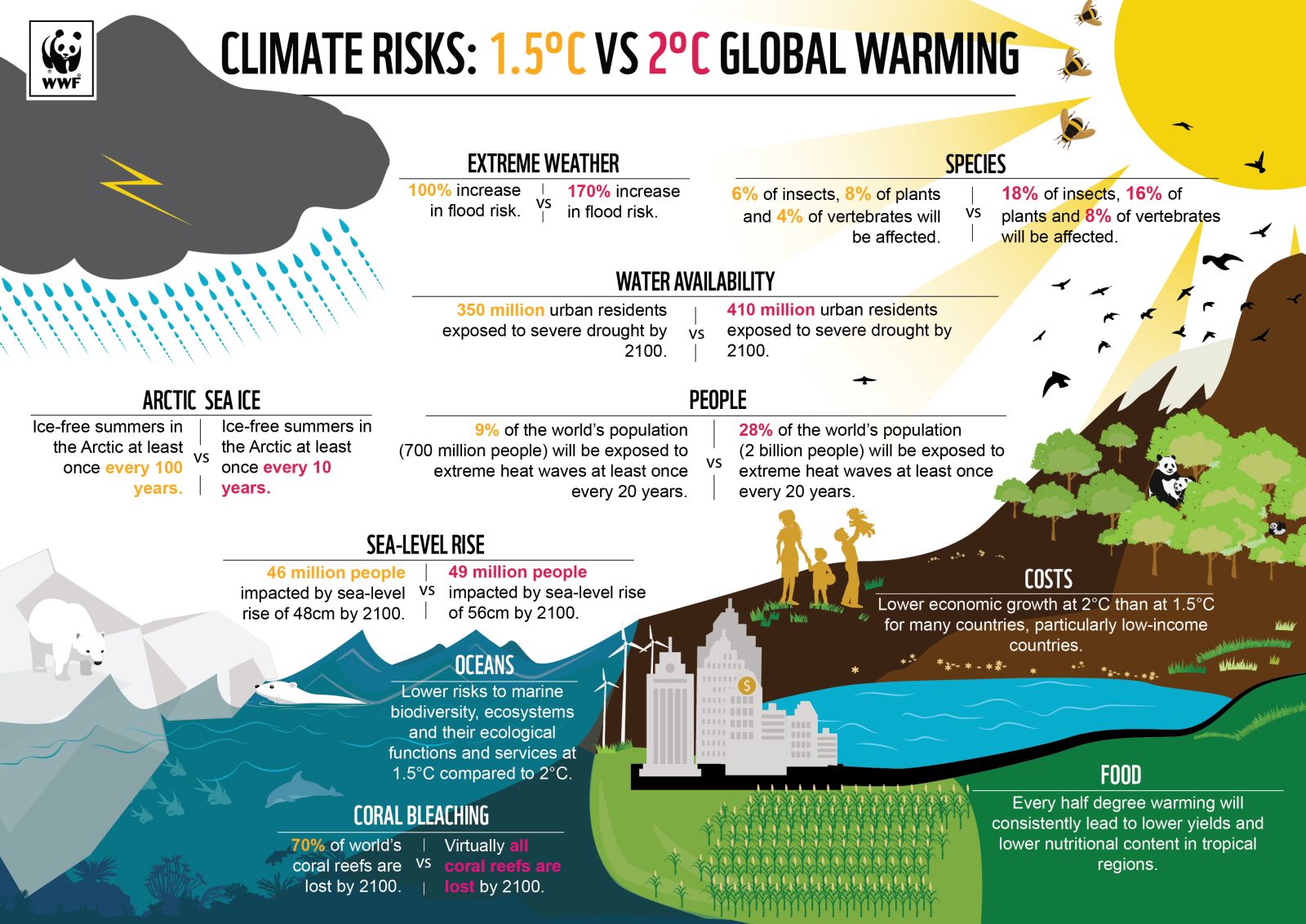
As explained by the climatologist Jean Jouzel and member of the GIEC in his book Climats passés, climats futurs (Climates of the past, climates of the future), water vapor is the main greenhouse gas, but "humans do not directly influence the amount of water vapor from the atmosphere through our activities, we act indirectly in that amount (...) and the surface.
In the book L’Origine du monde (The Origin of the World), biologist Marc-André Selossuses summarizes the analysis of the water vapor carried out by the IPCC: "What gases are the most affecting climate warming? Water vapour is the most influential (60%), but water vapour in the atmosphere is governed by evaporation and precipitation, in which human activities have had little influence, which does not greatly affect current climate change.” Therefore, its role as a greenhouse gas in the origin of climate warming is not recognised by water vapour.
The role of forests and vegetation in general is to be an instrument of carbon accumulation in efforts to limit climate warming. According to this perspective of the carbon cycle, the consequences of climate change are related to global warming: the loss of biodiversity is understood as a consequence of the disruptions suffered by animals in their reproduction or the difficulties of adapting plants and animals to such high speed warming. Similarly, climate warming caused by greenhouse gases results in the proliferation and malignancy of extreme atmospheric phenomena, the increased strength of tropical hurricanes, rising sea levels and acidification of seas.
Climate change based on water and carbon cycles
This second approach relates climate change to soil desiccation with extreme weather events and proposes as a solution to restore the water cycle the cessation of deforestation, reforestation and modification of agricultural models.
From the point of view of the water cycle, water vapor intervenes in different ways in the climate. First, plants produce local soda by evapotranspiration. This is the reverse effect of climate warming. The phenomenon is well known: on a warm summer day, under the shade of trees or in the forest, the temperature is always lower than in a clear area. In addition, plant evapotranspiration also affects the climate of the area. Seen from thermodynamics, the heat that carries the water vapor inhaled by the plants intervenes in the formation of clouds. Later, when the rain is thrown, the clouds will release that heat above them. The balance of the process is zero in its totality: the water cycle has made it a lift to the heat by taking it out of the leaves of the plants and sending it to the high atmosphere, while cooling the temperature in the place where they are.

Evapotranspiration is by far the main phenomenon that plants experience. About 200 molecules of water evaporate a CO2 molecule to transform it into oxygen and glucose, and each liter of evaporated water (at 20ºC) means 1,334 m3 of water vapor and a refreshment of 0.68 meters of steam heat. On the contrary, in the area deforested with demolition, there will be low evaporation and the environment will be heavily heated, the earth surface will have a very high temperature. This phenomenon explains why temperatures are as high in deforested areas as "clear-cut" areas or in freshly harvested or urbanized fields ("city hot spots").

How the forest calls rain
Precipitation comes from the perspiration of forest trees caused by the flow of water vapor. These steam flows add to the moisture coming from the sea. If from the shore of the sea the forest cover is continuous along the land, these wet currents will travel over thousands of kilometres causing rainfall and, according to Douglas Sheil and other experts, rainfall increases further the further away from the sea. However, if there are no forests as they move away from the sea, rainfall decreases almost exponentially, sometimes even eliminated.
It is the vapours of high atmosphere running water, as they have found more or less forests along the way, that feed the rains in inland areas of the continents with greater or lesser humidity. And this is even more evident in the case of large forests: Amazonia, Central African forests, Siberia, Southeast Asia…
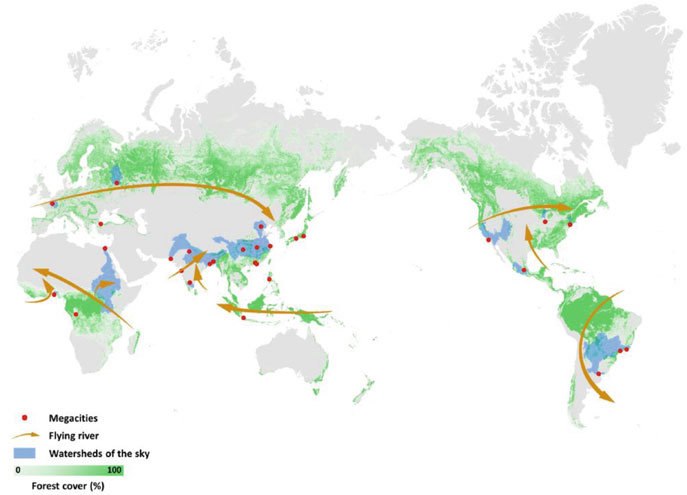
The fact that an area is repopulated or collapsed has significant rainfall consequences. There are many examples of how rainfall has been reduced with deforestation.
On the island of Borneo, the destruction of the forest for the planting of ole-palm fields has brought to the region a decrease in rainfall and an increase in maximum temperatures, paradoxically harmful to oil palm trees. So, in an interview, Douglas Sheil, an ecology researcher, says Borneo has “committed suicide with palm oil.”
Studies in northeastern Bohemia (Czech Republic) and Saxony (Germany) have shown how evapotranspiration decreases when the local tree cover is reduced or trees are unhealthy, as occurred in the 1980s in these areas by the sulphur dioxide (acid rain) emitted by the industry. And conversely, it was observed in 2004 that as forests recover their good health, their evapotranspiration also increased significantly.

Similar results are observed in the Kenyan forest of Mau. This forest located 150 kilometres north-west of the city of Nairobi was reduced by the demolition of trees from 5,200 km² in 1986 to 3,400 km² in 2006. As a result, evapotranspiration decreased considerably in the deforested areas, even though the rapidly growing tree plantations have somewhat mitigated the decline, with dramatic consequences: reduced rainfall and water scarcity in rivers, lakes and cities. This region had until then been profoundly feeding twelve rivers and six great lakes, including Lake Victoria. However, since then, the newly built Sondu-Miriu dam, built on the river of the same name, has never managed to generate the 60 MW previously calculated.
Rainfall in inland areas of the continents is largely due to long-distance recycling. 80% of China's water resources are based on the evapotranspiration of the plants of the Euro-Asian continent and the Amazon Rainforest is responsible for more than 70% of the rainfall concentrated in the Río de la Plata basin. The main source of rainfall in the Congo basin is evaporated moisture from East Africa, especially in the vicinity of the Great Lakes, while evaporation in the Congo basin feeds the moisture of the Sahel.
The destruction of the soil can also have serious consequences in line with the above. First, the soil itself loses the ability to accumulate and filter water. But in addition, it increases the sensation of heat in deforested areas and decreases evapotranspiration, which besides generating moisture, reduced the environmental temperature. As soils warm, contrasts of temperature between land and ocean will increase. According to Makarieva and his colleagues, co-founders of the concept of biotic pump, the explanation of the blockade of cyclone during the heat waves on the summer Euro-Asian continent and the proliferation of strong winds, floods and droughts may be in it. The destruction of former primary forests by deforestation and fires in Russia can affect these problems.
The role of biodiversity
In 75 per cent of the earth ' s surface, ecosystems are severely affected by deforestation, pesticides used in crops, soil artificialization, overfishing, plastic pollution, etc. Changes in the use of land crust and marine waters and pollution have endangered many species of life. Fertilizers and pesticides used in agriculture have significantly reduced insect populations, including pollinators. Both the rural hedges (live fences) and the destruction of the only trees in the countryside contribute to this loss. The reduction of hedges and isolated trees in the fields is a step in the same direction. The advance of crops towards agroforestry would facilitate ecosystem regeneration.
However, the most important thing about biodiversity is precisely what we do not see with our eyes: microorganisms that degrade dead plants and allow soil recovery by creating humus. The largest are earthworms, then come others of difficult visual observation (collemboli, mites, nematodes), soil fungi, which bring water, food and minerals from their mycorrhizal networks to the roots of plants, and soil bacteria, which make available to plants the degraded organic matter.
The populations of all of them have decreased considerably due to poor cultivation systems that have affected soil regeneration, halving the organic matter contained in European soils from 1950 to the present day. And in the last 50 years, the earthworm population has gone from two tons per hectare to less than 50 kg. Earthworm expert Marcel Bouché is responsible for this descent into the plough of fields, pesticides and bare uncovered soils.

Importance of soils and their roofs
Soils are the support for plant growth. Throughout history, man has been destroying the humus again and again. At the beginning of our civilization, the hills of Attica [today Greece] lost the humus thanks to the use of the plough, dragging the rains down to the valleys; so the cereal fields of steep slopes were gradually disappearing, leaving the way for olive trees capable of deeply rooted.
In Mesopotamia, with the irrigation of the fields for centuries, the soils were salinized, making it difficult first to grow the cereals in them and turning them into deserts. At the time of the Roman empire, the use of the plough at Lazio (the prosperous region of the Rome area), which guaranteed Rome the supply of cereals after having hit the bottom, led to the loss of the humus layer by the fields. In the lands of Phoenicians, desertification in the vicinity was amplified by the massive deforestation of cedar forests, with the demolition of trees to transform them into new fields of cultivation and the use of logs in the construction of Phoenician ships.

Much later, in EE.UU, the ‘conquest of the West’ was based on the search for new more fertile lands as the lands acquired were exhausted with cultivation and, above all, with tabaquaria. Later, as seen in the Dust Bowl in the 1930s, in the Great North American Plains, both the rain and the winds shattered with their erosion the surface of the soils, carrying tens of centimeters or even a one-meter layer, including the fertile humus. To cope with this disaster, the so-called conservation agriculture [Soil Conservation] emerged in the United States, which worked to keep the soil unburned and keep the surface permanently covered.
Africa provides an example of the damage to the soil from overpressure on livestock. In 1972, rainfall failed in the Sahel, where since 1930 the human population has multiplied by three and the number of livestock has doubled. Hunger resulted in the deaths of thousands (between 100,000 and 500,000 sources), the collapse of the livestock population and the flight of millions of people from rural areas to urban areas. However, a green pentagon appeared on dry, cracked desert land, as demonstrated by a NASA satellite, was a restricted area where regular or alternating livestock grazing was practiced (rotational grazing, paturage tournant in French), preventing animals from extracting fite as easily as plants replenish. This showed that despite the climate caused by famine, the wrong cultivation techniques and excessive pressure from cattle were the ones that caused the disaster.
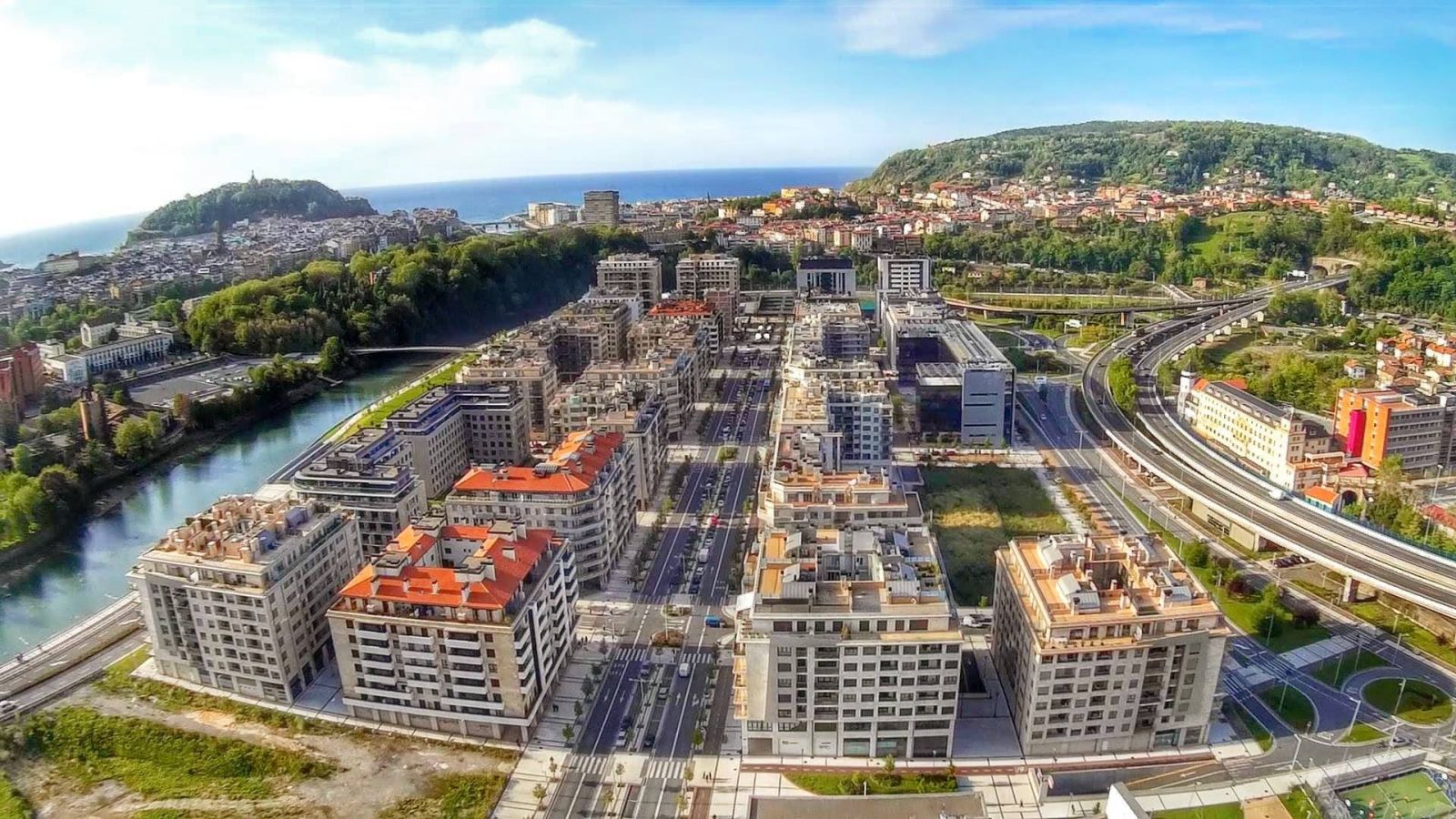
Climate narrative change
It is fundamental to recognize the importance of the aggression to the water cycle with changes in the soil surface, first with deforestation, second with erroneous cultivation techniques and finally with the artificialization of the soil by urbanization.
This reduces the evapotranspiration of the plants, leading to a reduction in rainfall and the proliferation of extreme climatic phenomena. If climate warming, for its part, can lead to rains and changes in regions and latitudes (here more or less rainfall), the consequences of changing the water cycle always go in the same direction: rains decrease, even more as the climate warms up.
The Amazon rainforest, when it reaches the turning point in this process [initiated with deforestation], will increasingly become savanna, gradually disappearing the isolated forests that remain. As the biotic pump that draws moisture from the sea to the ground would stop, the central box of the continent (the most prosperous and most active area of Brazil, located in the west of Sao Paulo) would disappear, transforming the region into significantly drier land. In the worst case scenario, Brazil could take the present form of Australia, a large desert with a more humid area on the shores of the sea.
For the entire planet, the process could end drying and desertification, although in temperate areas the warming of the seas would delay it. Vegetation and life guarantee the climate balance of our planet, enable the restoration of the vital system and make the planet habitable. However, this balance is unstable and could evolve to another balance point, a progressive evaporation of the oceans, as is known on planets near us in two versions: the cold version is shown by Mars and the hot version by Venus. These scenarios are much worse than those based solely on climate warming.
Based primarily on the analysis of the water cycle, the United Nations Environment Programme has reached the following conclusion: "If we want to avoid climate catastrophe, we need to stop deforestation, increase reforestation and apply agroforestry techniques."
As the Intergovernmental Panel on Climate Change (IPCC) limits its objectives to reducing greenhouse gas emissions, the transformation of the water cycle is not included in the list of causes of climate change. Consequently, it says that a solution to the water cycle will be given with the "mitigation" of climate change, and that is why it does not give sufficient importance to deforestation which is the root cause of the problem, and the immediate and total suspension of deforestation should be a priority requirement! Reforestation and the global transition of cultivation should be based on the objectives and deadlines agreed in international treaties.
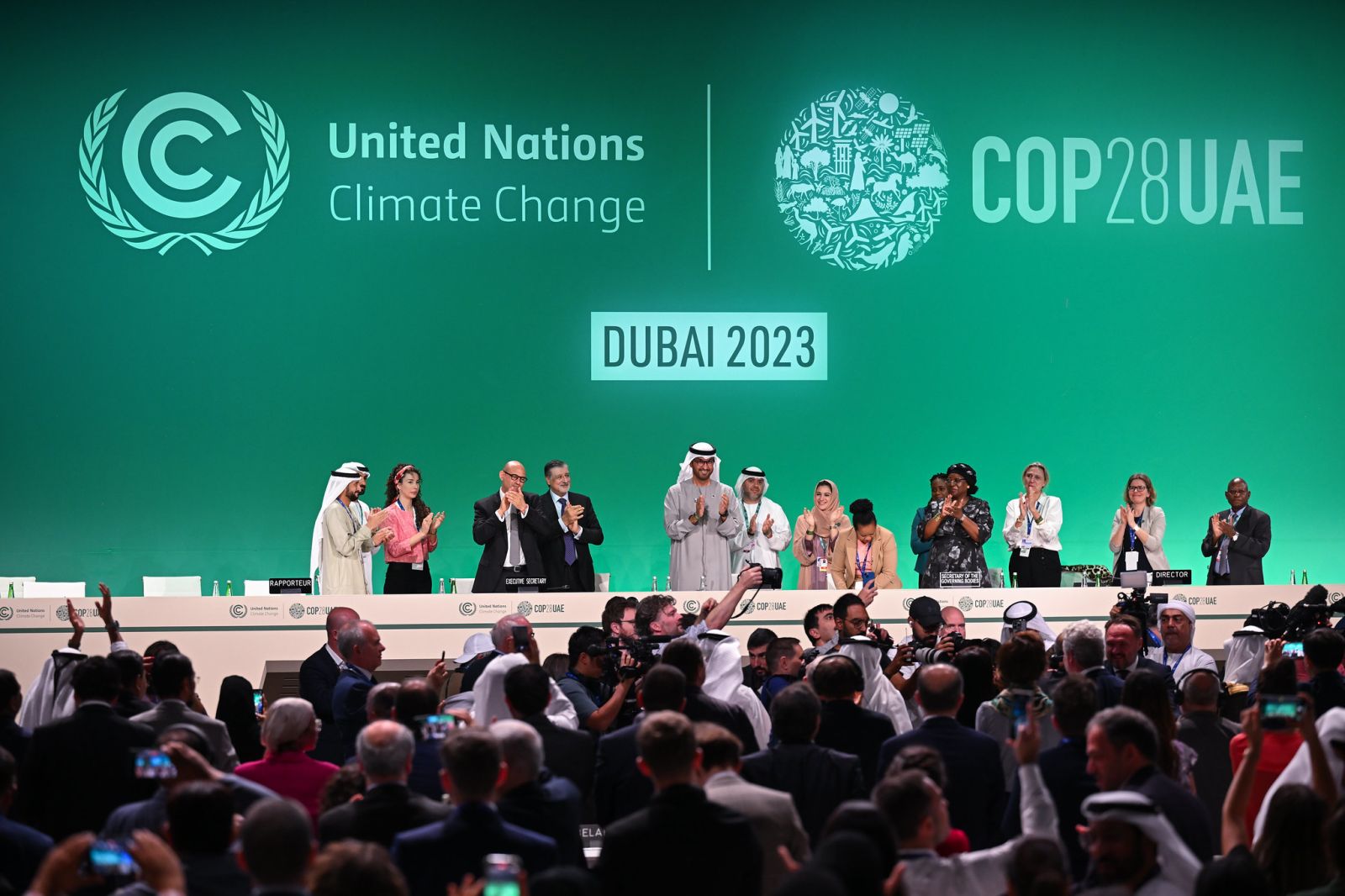
Can the climate conferences be saved?
The COP conferences are failing in reducing greenhouse gas emissions, as the targets set at the Paris conference have not been achieved or met.
And as regards the requirement for COPs to take into account the water cycle, it should be noted that it has been left out of the bases of these conferences, as they left it in the 1992 Framework Agreement on Climate Change in its “golden letters”. At that time, the importance of the water cycle on climate was unknown… or rather, it was forgotten. In fact, Jean-Baptiste Fressoz and Fabien Locher, in their book Les révoltes du ciel, point out that at the end of the 18th century François-Antoine Rauch established the relationship between the great cycle of water and climate, and soon after François Aragon highlighted the relationship between the forests of the 19th century.
So the decision to introduce the water cycle into the equation must come from politicians, but … do you want to do it? Have you heard about it? The answer is no. Civil society is surely the only one who can play its part in this.

Last word of hope
What happens is that, as we are observing in different places around the world, by restoring the water cycle locally, it is possible to recover the climate and again attract rains.
Professors Rajendra Singh and Indira Khurana, in their book Rejuvenation of Rivers, showed the result of the work done in the state of Rajasthan (India) to recover the water cycle, how after 35 years the almost disappeared region has become a prosperous territory, with the saturation of seven new rivers already depleted.
Sebastião Salgado and Lélia Wanick Salgado in Brazil have planted new forests on the banks of the River Doce, in bare meadows and hills eroded by deforestation. Moisture has returned with trees to these areas, regenerating depleted springs and recovering biodiversity.
In Saudi Arabia, in the Al Bayda region, the work carried out to sustain and penetrate the soil without letting rain escape has allowed the area deserted by excessive livestock pressure to be restored and rains returned over time. In Egypt, the restoration of the Sinai peninsula with the restoration of Lake Bardawil, near the Mediterranean, Hydrater la Terre, le rôle oublié de l’eau dans la crise climatique (Moistening the land by forgetting the importance of water in the climate crisis), has been revealed by Ananda Fitzsimmons.
When climate warming is taking place, with the restoration of the water cycle, rain can be achieved and the soils can decrease the heat irradiated by the evapotranspiration of the plants, and the climate can be halted. If massive repopulations and the transition of crop models are organised globally, this may mean not only the recovery of the water cycle, but also the regeneration of soil, the storage of carbon in trees, plants and soil humus and, ultimately, a significant reduction in atmospheric CO2 quantities: if integrated into climate objectives, a much more global solution to climate change will be provided.
The carbon cycle, the water cycle, the biodiversity of the environment and soil… everything has been altered and destroyed by humanity. The enrichment of a range of predatory multinationals has been based on the massive extraction of natural and fossil resources, replacing the mechanisms of life with chemical and industrial processes that offer them benefits.
Carbon and water cycles and environmental and soil biodiversity are closely related to their functioning. Its integrity is therefore what needs to be restored, as the United Nations Environment Programme states, "by working with plants, soils and water to cool the climate and re-moisten the earth's landscapes".
Working with living beings and not in their place or against them will allow us to restore all the cycles of life so that our beautiful blue planet will return to sleep from living things.
Andeetako Altiplanoan, qocha deituriko aintzirak sortzen hasi dira inken antzinako teknikak erabilita, aldaketa klimatikoari eta sikateei aurre egiteko. Ura “erein eta uztatzea” esaten diote: ura lurrean infiltratzen da eta horrek bizia ekartzen dio inguruari. Peruko... [+]













